mytest
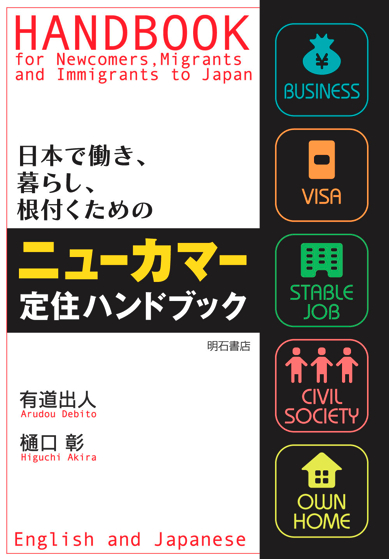
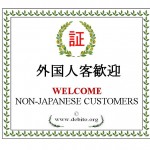
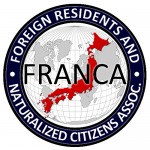
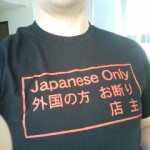

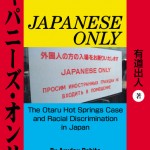
![]() UPDATES ON TWITTER: arudoudebito
UPDATES ON TWITTER: arudoudebito
Hi Blog. I received this book from Director Sakanaka Hidenori at JIPI (Japan Immigration Policy Institute) two days ago. “The Concept for a Japanese-Style Immigration Nation”. Nice little handbook, haven’t read it yet, but here are scans of the cover, the contact details for you to get your own copy, and table of contents. You see, despite the virtual taboo on considering immigration as an option within some public fora, other people are still willing to put pen to paper and give it a good think.
The book is not on sale, so contact JIPI directly for details. More of Sakanaka’s writings regarding Japan’s future of immigration on Debito.org here. Arudou Debito in Sapporo
(click on images to expand in your browser)
ends

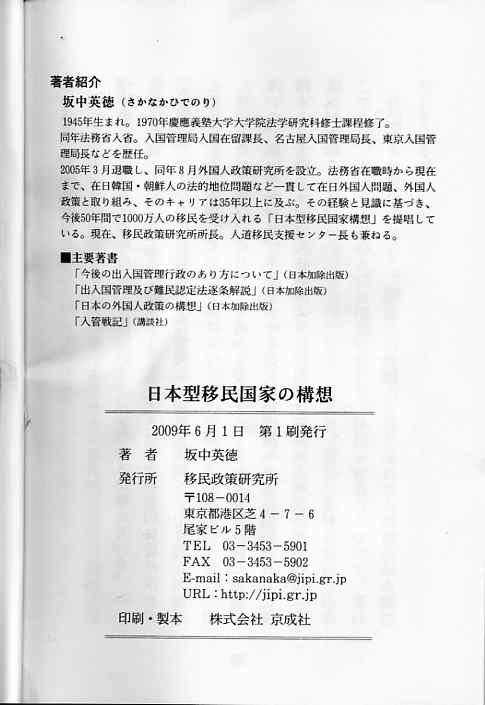
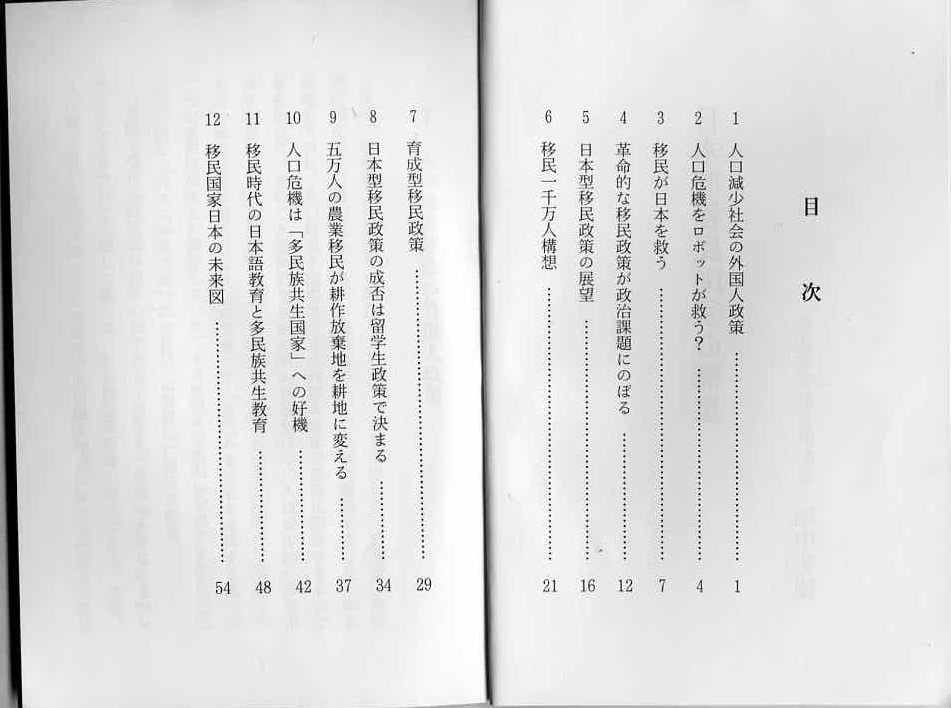
4 comments on “JIPI book on “The Concept for a Japanese-Style Immigration Nation” by Sakanaka Hidenori”
On a related note here’s the current governments attitude towards refugee claims:
“Foreign Ministry withdraws financial aid to 100 refugee applicants”. Asahi Shimbun, July 24
As a consequence, the bureau takes longer to examine each application and make a decision. The process now takes about two years on average.
Because applicants cannot work during this period, the number of people seeking financial assistance has also increased drastically, leading to a budget shortfall for the aid program.
“First of all, the examination by the Justice Ministry should be shorter,” said a Foreign Ministry official.
At the Justice Ministry, an official said: “We are doing our best to shorten the period by increasing the number of staff members for the examinations. But we have to examine each case carefully. Because of that, some cases take a long time.”
— Please send us the link. Thanks.
http://www.asahi.com/english/Herald-asahi/TKY200907240268.html
Sorry, must be in weekend mode already… 😉
Another write-up from a different source:
“Asylum seekers find little refuge in Japan”, Japan Today
http://www.japantoday.com/category/lifestyle/view/asylum-seekers-find-little-refuge-in-japan
By Sophie Knight
TOKYO —
It’s easy not to notice them: they blend in anonymously with the rest of the foreign faces here. You could be forgiven for not even realizing they exist at all. But refugees and asylum seekers are very much a reality in Japan — and as their numbers increase, the government is coming under fire for its handling of the issue.
Despite being the third largest donor in the world to the United Nations High Commissioner for Refugees (UNHCR), Japan admits only a tiny number of asylum seekers compared to other industrialized nations, and often appears reluctant to grant refugee status to those who do come. Damning statistics are bandied about, such as the fact that the country has accepted just 508 refugees from the 7,297 applications made since 1982.
The media doesn’t paint a very flattering picture, either. Many will remember the Dogan and Kazankiran families, Kurdish Turks whose unsuccessful battle to be recognized as refugees in Japan was reported extensively in local English-language press and overseas. When two members of the Kazankiran family were summarily deported in January 2005, the UNHCR denounced the move as “against international law,” and the Japanese government received widespread condemnation.
Both families have since been resettled in other countries, but the memory of their struggle has lingered on. So too have criticisms from organizations such as Amnesty International, which reported in May that Japan “continued to deport failed asylum applicants to countries where they faced a risk of torture or other ill-treatment.” Not exactly the most glowing of report cards. But is the reality as bad as the detractors would have us believe?
Japan has only recently begun to feel the impact of the refugee crisis. It didn’t ratify the 1951 U.N. Convention relating to the Status of Refugees until 1981, bowing to international pressure in the wake of the Vietnam War and the flow of refugees — the so-called “boat people” — that resulted from it. It took three years after the fall of Saigon for Japan to accept just 500 people, and ten years before the quota was raised to 11,500. Although these were significant numbers for a country that had never previously taken in refugees, the government wasn’t ready to open the floodgates yet. Instead of granting individual refugee status to those it accepted, Japan admitted the refugees as a group based on humanitarian grounds. The number of refugees accepted thereafter slowed to a trickle — during the whole of the 1990s, fewer than 50 asylum seekers were granted refugee status.
No welcome mat in Japan
Refugees, by definition, are people fleeing persecution or danger in their home country to seek safety and a better life elsewhere. Nations which have signed the U.N. Convention on Refugees, including Japan, pledge to protect them. Yet those who arrive here as asylum seekers are routinely treated as illegal immigrants and incarcerated in detention centers. Legal advice is difficult to obtain, and those who manage to apply for refugee status are faced with an average wait of two years to get an answer.
Asylum seekers are not legally allowed to work during this period, yet the government provides financial support to only a limited number of candidates, and only for a period of four months. This support is hardly lavish, either, consisting of 135,000 yen in living expenses per month for a family of four, plus a monthly maximum of 60,000 yen in housing support. When the number of refugee applications last year doubled from 2007 to 1,599, the government temporarily suspended support altogether, claiming to be “overwhelmed” by the increase. Although the payments were reinstated after a few days, worse news arrived this May, when tightened eligibility criteria cut off support for more than 150 asylum seekers.
Eri Ishikawa of the Tokyo-based Japan Association for Refugees (JAR) admits that the situation is tough. “We’re swamped,” she sighs. “Forty people have become homeless, some of them women and children. While we and other charities are trying to secure accommodation as quickly as possible, we’re struggling to deal with the sudden increase in demand.”
In addition to legal and social advice, the JAR also provides financial support for those in need. After the government tightened its acceptance criteria, the group launched a fund-raising effort in order to continue supporting those who had been deprived of aid under the new restrictions. Thanks to both corporate and individual donations, JAR has managed to raise 3,609,000 yen, which they aim to start distributing this month.
Asylum seekers with valid passports or travel papers are not usually incarcerated as soon as they arrive in Japan, and they can enter the country on a tourist visa.
This is what Hso and Myint* did when they first came here in 1992, fleeing the military junta in their native Myanmar. When we meet them in their elegant Korean barbecue restaurant in Takadanobaba, it’s hard to believe that they have overcome a 17-year struggle to get there. Speaking no Japanese when they first arrived and without legal advice or financial support, they had no choice but to slip under the radar, avoiding the authorities after their tourist visas ran out. Having made connections with the local Myanmarese community, they managed to make do for ten years by working illegally. Finally, in 2003, they applied for refugee status on the advice of their families.
Yet no sooner had they applied than Hso was arrested while out riding his bicycle, when police noticed that his alien registration card and visa were out of date. He was held in detention for 64 days awaiting trial, during which time he shared a cell with two yakuza. “Ironically, they understood me better than the police,” he recalls. “They shouted at the officers, ‘Hey! Release this guy, he’s done nothing wrong!’ But when I tried to tell the police I was a refugee, they said it had nothing to do with them, that it was a matter for the Ministry of Justice.”
Hso was eventually released with a warning and five-year probation, but that wasn’t to be the end of it. After his case was passed over to the immigration authorities, he was immediately taken to a detention center in Shinagawa, where he would spend another 19 months.
“It was terrible,” he says. “There were six men to a six-mat room, and you had to ask for permission just to use a pen. I had severe back pain, but the doctor didn’t even look at me when he came. He just gave me weak painkillers, and it was a month before they finally took me to hospital — in handcuffs.” Eventually, Hso was given spinal injections to relieve his pain.
After applying for voluntary release seven times, Hso was finally let out to join Myint, who had been struggling to raise their three young children by herself. Receiving no help from the government, she had had to survive on money sent over by her family in Myanmar. In May 2005, after a tense two-and-a-half year wait, the couple was finally informed that they had not been granted refugee status, but were allowed to stay in the country as long-term residents on humanitarian grounds. “I wish the government had recognized us as refugees,” says Hso, “but I know that I am one inside, and that’s what counts.”
Critics have plenty of ammunition
Cases like this give critics of Japan’s refugee policy ample ammunition. The length of time it takes to consider refugee applications and the lack of support provided to asylum seekers during this period are both issues that need to be addressed. Critics are also quick to attack the numbers of asylum applications and the approval rate, arguing that neither compares favorably to other industrialized countries. Even last year’s unprecedented 1,599 applications pale in comparison to the approximately 49,000 received by the U.S., 35,200 by France or 30,500 by the UK. While Sweden has one applicant for every 14 citizens, in Japan the figure is just one per 75,000.
Yet such comparisons can be misleading. It’s important to remember that no country actively invites asylum seekers. Nations that have signed the U.N. Convention on Refugees are committed only to the principle of “non-refoulement,” which means they pledge not to return refugees to areas where they face potential persecution or danger. In practice, the number of applications a country receives depends not on its immigration laws and policies per se, but rather on how they are perceived by asylum seekers. Other factors, such as conflicts in the surrounding area and the existence of a large foreign population or native support network, also come into play.
Japan’s unpopularity as a destination for asylum seekers is due in part to the relative lack of conflict in Southeast Asia, as well as the country’s small foreign population and the perceived difficulty of learning the language and adjusting to the society. History also comes into it: in the same way that Europe’s long tradition of colonialism and immigration helps explain the high numbers of refugees living there, Japan’s isolationism is a major factor.
By focusing on the numbers of asylum seekers who are ultimately recognized as refugees — around 11% — Japan’s critics also often overlook those who are granted special residence permission for humanitarian reasons, as was the case with Hso and Myint. When you take these people into account, the number who are permitted to stay here actually stands at around 25%.
Despite appearances to the contrary, too, the government hasn’t been quite as intransigent as it seems. Japan’s overseas programs, including its generous donations to the UNHCR, have begun to be matched at home in recent years. The most significant initiative is a pilot resettlement program announced last December — the first in the region — which is designed to actively increase the number of refugees here. Due to start in 2010, the program will bring 30 Myanmarese refugees a year for three years, from the camps in Thailand where they are currently sheltered. Small steps, maybe, but the move was warmly welcomed by both the UNHCR and refugee charities, including JAR.
Such measures have not gone unnoticed by the domestic media, which has voiced concern over the problem of integrating refugees into society. Yet these fears may be overstated. Expats in Japan are often quick to criticize the country for being “closed” to foreigners, but it’s easy to forget how asylum seekers are treated in other industrialized nations, where they are frequently consigned to ghettos and subjected to daily discrimination and hate crimes. The relatively low rate of immigration in Japan has meant that “asylum seeker” isn’t a dirty word here as it is in many European nations, and the country’s extremely low crime rate — including a relative lack of racially motivated crimes — is also a point in its favor.
Of course, there’s still plenty of room for improvement. Hso and Myint’s story is just one among many tales of struggle and hardship. Still, it’s important to focus on the issues that really matter in this debate, like the welfare and treatment of asylum seekers within Japan, not just the numbers coming here. Refugee issues in the international community are often described in terms of “burden-sharing.”
But one look at Hso and Myint — now exemplary citizens with perfect Japanese, running their own business while bringing up three bilingual children — indicates that asylum seekers and refugees can make positive contributions to the society that hosts them. Perhaps the new resettlement program is a sign that the government is slowly recognizing this fact, and a reason to feel more optimistic about the future of refugees in Japan.
For details on the Japan Association for Refugees, see http://www.refugee.or.jp/en
* Names have been changed
Interesting side note on the difficulty of getting a foreign kid registered in the right school:
“Osaka school must be told to enroll foreign girl”, Japan Times, July 30
http://search.japantimes.co.jp/cgi-bin/nn20090730a6.html